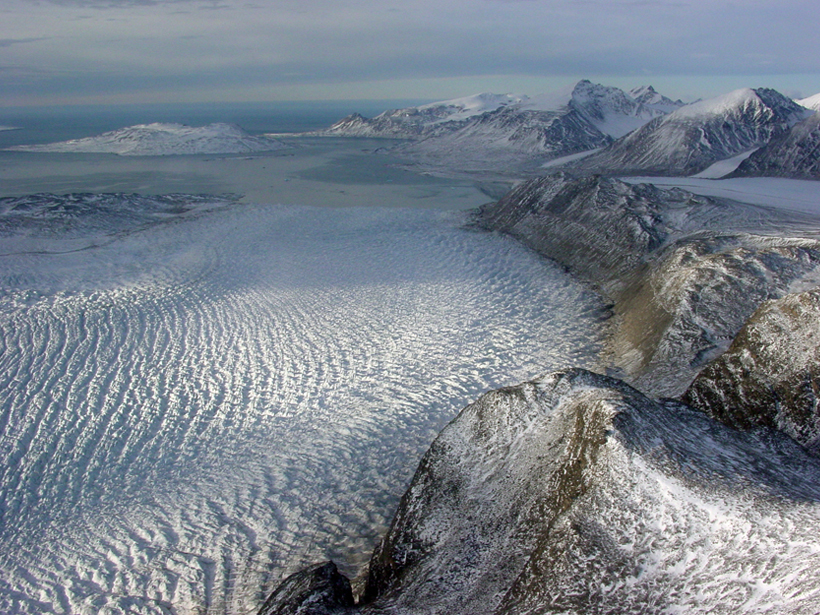Source: Geophysical Research Letters
Near the surface of glaciers, firn—partially compacted snow left from previous years—has the potential to store significant amounts of meltwater. Year-round reservoirs of liquid water trapped in the firn, called perennial firn aquifers (PFAs), are commonly observed on mountain glaciers and were discovered on the southeastern edge of the Greenland ice sheet in 2011.
Now, a team of researchers has identified a PFA similar to the ones in Greenland in the Holtedalfonna ice field in northwestern Svalbard (a Norwegian archipelago in the Arctic Ocean). Using GPS and ground-penetrating radar observations, Christianson et al. found that the PFA has a dynamic water table that can fluctuate by several meters from year to year. Their data show that the downward percolation of meltwater recharges this aquifer during the summer, and downhill flow partially drains the aquifer during the winter. Using a mixing model, the authors also inferred that the aquifer’s bulk liquid water content decreases substantially with depth, from about 40% to about 2%, as densification reduces available firn pore space. However, the percentage of this decreasing available pore space that is filled by liquid water increases with depth, and the lower half of the aquifer is likely water saturated.
Although this discovery extends the diversity of settings where PFAs have been found, the authors emphasize that the implications for glacier and ice sheet dynamics remain unclear. The storage of summer meltwater could potentially affect ice flow by warming the ice below it. PFAs may also increase drainage to the bed, a process that has been linked to rapid basal thawing. Drainage to the bed may also enhance the formation of deep fractures, potentially accelerating ice shelf breakup and ice sheet shrinkage.
Because PFAs on Arctic glaciers like Holtedalfonna may respond more rapidly to climate change and can be more easily characterized than the larger PFAs on the Greenland ice sheet, the authors assert that additional detailed observations will ultimately allow better quantification of PFA processes and their effect on ice sheets. (Geophysical Research Letters, doi:10.1002/2014GL062806, 2015)
—Terri Cook, Freelance Writer
Citation: Cook, T. (2015), Near-surface aquifer discovered on Svalbard glacier, Eos, 96, doi:10.1029/2015EO037049. Published on 9 October 2015.
Text © 2015. The authors. CC BY-NC 3.0
Except where otherwise noted, images are subject to copyright. Any reuse without express permission from the copyright owner is prohibited.

